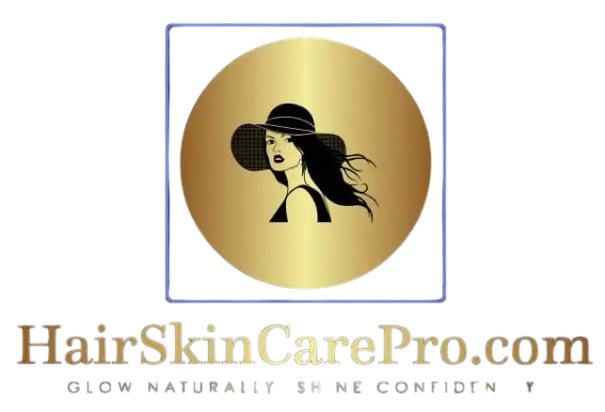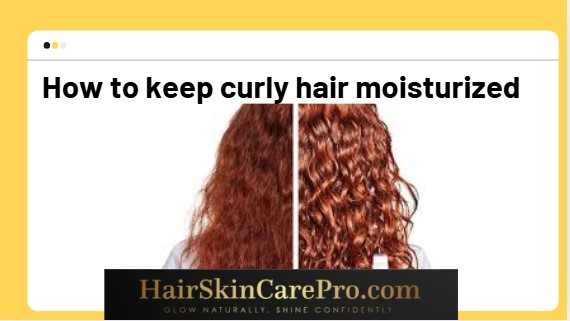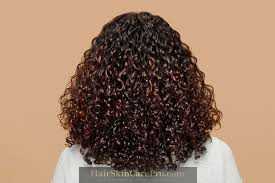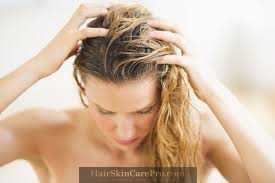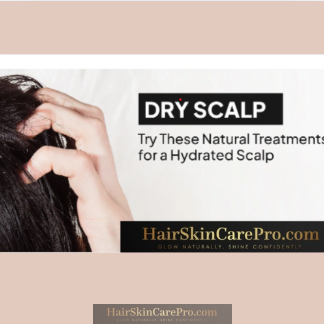Discover the best tips and tricks to know answer for how to keep curly hair moisturized? From daily routines to deep conditioning, learn how to achieve healthy, hydrated curls. Find product recommendations, DIY recipes, and expert advice for all curl types.
Curly hair does not make it easy for oils from the scalp to work their way down the length of the hair shaft — so the ends have a tendency to be dry. Additionally, due to the bends and twists in curly hair, the hair is more susceptible to damage and losing moisture. So no wonder adopting a regular moisturizing regimen is key to maintaining those curls in a healthy and aesthetically pleasing state.
Table of Contents
- Introduction to Keeping Curly Hair Moisturized
- Understanding Curly Hair Types and Moisture Retention
- Importance of Moisture for Curly Hair Health
- Daily Moisturizing Routine for Curly Hair
- Recommended Products for Daily Moisturizing
- Application Techniques
- Weekly Deep Conditioning Treatments
- Best Ingredients for Deep Conditioning Curly Hair
- How to Use Deep Conditioners Effectively
- DIY Deep Conditioning Recipes
- Protective Hairstyles to Retain Moisture
- Types of Protective Styles
- Tips for Maintaining Moisture with Protective Styles
- Nighttime Hair Care for Curly Hair
- Nighttime Routines to Keep Curls Moisturized
- Recommended Pillowcases and Hair Bonnets
- Avoiding Common Moisture-Sapping Mistakes
- Common Mistakes That Lead to Moisture Loss
- Ingredients and Practices to Avoid
- How to Recognize and Fix Moisture-Related Issues
- Top Product Recommendations for Curly Hair Moisture
- Best Shampoos, Conditioners, and Leave-In Treatments
- Top Styling Products for Moisture Retention
- Natural and DIY Alternatives
- Expert Tips and Tricks for Moisturizing Curly Hair
- Advice from Hair Care Professionals
- Unique Tips for Different Curl Types
- Seasonal Adjustments to Your Moisturizing Routine
- Frequently Asked Questions (FAQ) on Curly Hair Moisture
- Top 20 FAQ on Curly Hair Moisture with Detailed Answers
- Conclusion and Final Thoughts
For many reasons, how to keep curly hair moisturized
Hair Health&Growth: A two-in-one moisturizer helps minimize breakage and hair growth.
More defined curls: If your hair has the right amount of moisture through and through, it is less likely to get frizzy, and hence, curls will take better shape.
Elasticity and Strength: A properly moisturized hair shows better elasticity and this directly reduces the breakage of hair when tension is applied.
Shine and Softness: Curls that are properly moisturized have a natural shine and softness that is difficult to replicate with dry tresses.
Symptoms of curly hair being moisture starved would be frizz, lack of curl definition, brittleness and split ends. When these signs appear, it’s time to reassess and repotting your moisturizing game plan.
Daily Routine for Moisturising
The basis of healthy hydrated curls, a daily moisturizing regime. So to help, here’s how you do it, step by step:
The Adding Moisture Routine for Curly-Hair
Start with a Moisturizing Shampoo: Start with a rich, sulfate-free shampoo to remove dirt from your hair, but gentle enough that it doesn’t remove natural oils from your hair. Look for formulas with nourishing ingredients such as aloe vera, glycerin and coconut oil.
Deep Conditioning: Use a moisturizing conditioner, focusing on your mid-lengths to the ends of your hair, which are often the driest areas. Apply a wide kind-tooth comb liberally from the scalp to the ends of the hair in a motion that evokes an equal parts shimmy and a cat that just caught a fluttering moth.
Leave-In Conditioner: After washing out the conditioner, work a leave-in conditioner into damp hair for a second layer of moisture and protection that stays with you throughout the day.
MOISTURE SEALING: Light oil or butter to seal in that moisture. Common choices include argan oil, jojoba oil, and shea butter—hydrating oils that go on smoothly.
Styling with Hydrating Products Use curl creams, curl gels, or curl mousses with added moisture. Steer clear of alcohol or harsh chemicals which can also dry hair out.
Quick Tip: The best way to resuscitate curls in between washes is to mist them with a water–leave-in conditioner mix and scrunch the hair a couple of times to aid in coalescing curl definition.”
Weekly Deep Conditioning
This is a crucial step to keeping curly hair moisturized enough and for this we have to promise ourselves to add a week deep conditioning treat to your hair care routine. Deep conditioners are designed to penetrate the hair shaft more than your average conditioner to offer moisturizing and nourishing benefits.
Deep Conditioning Ingredients:
– Honey: A humectant that attracts and locks in moisture.
rat oil: These fatty acids and vitamins nourish and moisturize the hair.
Coconut Milk – Contains proteins and fats that nourish and moisturize the hair.
Aloe Vera : Famous for cooling the scalp, also delivers featherlight moisture.
How to Properly Use Deep Conditioners:
You should apply the product on wet hair to ensure it quickly penetrates your cuticles. Apply generously, concentrating on the ends.
Seal It and Blast It: Cover your hair with a shower cap or plastic wrap to keep in all that heat, and apply heat with a hooded dryer or a towel. Heat helps to open the cuticles of your hair, allowing the conditioner to penetrate more deeply.
How long to leave it on: Adhere to the recommended time on the product label, generally 20-30 minutes.
Rinse Well: Use a cool-water rinse to take the deep conditioner out and keep the hair cuticles closed so that moisture stays with you.
DIY Deep Condition Recipes
Avocado & Honey Mask: Blend a ripe avocado with 2 tbsp of honey. Follow with: Apply the mix on damp hair, and let it sit for 30 minutes then remove.
Coconut Milk and Olive Oil Hair Mask: Mix half a cup of coconut milk with two tablespoons of olive oil. Soak your hair in the mixture and leave it for 20 minutes and then rinse.
Protective Hairstyles
Protective hairstyles help retain moisture since they minimize the manipulation of hair and exposure to environmental conditions. These styles also provide greater protection against hair breakage and split ends.
Types of Protective Styles:
Braids: Box braids, cornrows, or French braids work well to protect curly hair.
—Twists: Two-strand twists, flat twists and twist-outs are ideal for versatility and minimal maintenance.
& Updos: Buns, chignons and ponytails are perfect for keeping the hair off your shoulders and schools friction.
Maintain Luster In Protective Styles:
Moisturizing Always, with a protective hairstyle, ensure to keep your hair hydrated through leave in or moisturizing spray.
Sealing in that Moisture with Oil: After a moisture of your choice, seal it in using a light oil to the hair and scalp.
Tension: Offer protection from breakage and tension with a protective style that is not too tight.
Glamor Nitetime: Cover your hair with a satin or silk scarf or bonnet to help keep it secure while you sleep.
Nightly Hair Care Routine
Actually, the moisture in curly hair is very important, especially during the night. Follow these best practices:
Pineapple Technique: Keep your curls intact and prevent them from falling flat by loosely pinning the hair into a high ponytail at the top of your head.
Satin or Silk Pillowcase: Consider swapping out your pillowcase for something satin or silk to reduce friction and minimize moisture loss.
Satin or Silk Scarf Wrap: According to Ouidad, a silk or satin scarf can keep your strands protected and hydrated all night long.
Overnight hydration: Apply a leave-in or lightweight moisturizing spray treatment to keep hair hydrated overnight, right before wrapping it.
Crimes That Keep You Moister Starved
Steer clear of these common mistakes that will drain the moisture from curly hair:
Over-Washing: You should wash your hair every week or every second week as required so that it should not strip out natural oil.
No Harsh Ingredients: Aim to use sulfate-free products to help keep your curly locks healthy and moisturized.
How to best take care of Healthy Curly Hair:
No Harsh Ingredients: Avoid sulfates, alcohols and silicones, all which can strip moisture from curly hair. Use mild, sulfate-free soaps and moisturizing components like shea butter, glycerin, and aloe vera for healthy hair.
Condition After Every Wash: Regardless of how many times a week you wash your hair, you should condition it after every wash, as it restores moisture and detangles your hair, making it easier to manage your curls.
Minimize Heat Styling: The use of heat styling tools like blow dryers, flat irons, and curling wands can be damaging; minimize use. If you use heat to style your hair, use a protectant, and prioritize it.
Gentle Drying Techniques: Avoid using a rough towel that can create friction and result in frizz. Use a microfiber towel or a cotton T — something soft and absorbent — and squeeze out excess water.
Best Products for Curly Hair:
Shampoos:
– SheaMoisture Coconut & Hibiscus Curl & Shine Shampoo
DevaCurl No-Poo Original Zero Lather Conditioning Cleanser
Ouidad Advanced Climate Control Defrizzing Shampoo
Conditioners:
SheaMoisture Manuka Honey & Mafura Oil Intensive Hydration Conditioner
DevaCurl One Condition Original Daily Cream Conditioner
Aussie 3 Minute Miracle Moist Deep Conditioner
Leave-In Conditioners:
Kinky-Curly Knot Today Leave-in Conditioner
Cantu Shea Butter Leave-In Conditioning Repair Cream
Mielle Organics Pomegranate & Honey Leave-In Conditioner
Curl Creams and Gels:
As I Am DoubleButter Cream
Eco Styler Olive Oil Gel
Aunt Jackie’s Curl La La Defining Curl Custard
Natural and DIY Options:
Aloe vera gel
Coconut oil
Shea butter
Flaxseed gel (1 DIY recipe: boil flaxseeds in water until gel forms, strain and store in a jar).
Tips for Moisturizing Curly Hair
Additional expert tips from hair care experts and curly hair devotees on maintaining moisture in this hair type:
Layering Cheat Code: Use the “LOC” method (Liquid, Oil, Cream) to layer products in a way that ensures moisture is locked in. Start with a water-based leave-in conditioner, follow with an oil, and lock in moisture with a cream or butter.
Regular Trims: Make regular trims a priority to keep split ends at bay and prevent breakage. Healthy ends are better at holding onto vital moisture.
Seasonal Adjustments: Adjust your hair care routine based on the season. In the colder months, stick with heavier oils and butters; in warmer weather, opt for lighter products.
Sun Protection: When out in the sun, protect your curls against the sun and loss of moisture by wearing a hat or using a UV-protectant spray.
Hydration: Drink an adequate amount of water to keep your hair hydrated as well as your body hydrated would help your hair to a healthy concert.
In Summary
Keeping curly hair from drying out is a time-intensive process that requires the right products, and for many, there is a lot of technique involved. But upon realizing your curl pattern, adding in a regular moisturizing schedule, using protective styles and nighttime treatments, it is possible to achieve nourished, well-defined, and hydrated strands. Steer clear of moisture-sucking traps and choose products specifically designed for your individual hair goals. These tips and tricks is the key to releasing the power of your beautiful curls.
Ask your reader to comment with their own curly hair care wisdom, and remind them to subscribe or follow you for more curly hair-related posts.
20 Frequently Asked Questions About Healthy Hydration for Curly Hair
Why is curly hair typically dryer than straight hair?
Curly hair is drier than straight hair due to its structural squeak. As curly hair strands have a little curl to them, these bends and curls, prevent the natural sebum produced by the scalp, from reaching the ends of the hair, thus making it dry. Curly hair, in particular, has raised cuticle layers that can actually lead to moisture evaporation.
How often do I grease my curls?
Curly-haired peeps, you need a daily moisturizing routine. Apply a leave-in conditioner then a soft oil or butter sealant. Finally, incorporate a weekly deep conditioning treatment into your regimen for deep hydration.
What are the best ingredients to hydrate curly hair?
Look for products containing glycerin, aloe vera, shea butter, coconut oil, honey and panthenol. These ingredients help attract and hold moisture in the hair. Avoid any products that contain sulfates, alcohol or silicones, which can rob the hair of moisture.
Can I use regular conditioner as leave-in conditioner?
Sure, you can leave normal conditioner in your hair, but you have to be careful. Work a pea-sized amount through damp hair, concentrating on the ends. Choose a lighter weight formula that won’t weigh your curls down.
What do I do for my curls between wash days?
REINVIGORATE tired curls with a spritz of water blended with leave-in conditioner. Scrunch your hair into your head to reactivate the curls. Or, a curl strengthening spray specifically made for curly hair.
What is the best protective hairstyle for curly hair?
Protective styles, such as braids, twists, buns and updos, help retain moisture and have minimal manipulation. These styles are designed to reduce environmental exposure and breaking.
Best tips to control frizz in curly hair?
Keep hair moisturized with anti-frizz lotions and less touching to control frizz. Sleeping on a satin or silk pillowcase and drying your hair with a microfiber towel or a cotton T-shirt can also prevent frizz.
Is it possible to use a heat tool on curly hair?
Using heat styling tools occasionally is fine, but regular usage is damaging and drying too. Just be sure to use a heat protectant and put your heat setting lower when you can. Curly hair should be air dried or blown out on a cool setting.
How do I deep condition my curly hair properly?
To deep condition properly, spread on clean damp locks and cover the hair with a shower cap or plastic wrap. Applying heat, such as a hooded dryer or warm towel, will help products penetrate into the hair shaft. The hair cuticles would then seal, so rinse them with cool water after 20–30 minutes.
Why LOC method is Important for Curly Hair for Moisture Retention
LO (Liquid, Oil, Cream) is a method of layering to seal in moisture. Start with a water-based leave-in conditioner (Liquid), follow with oil to assist with sealing moisture in (Oil), and finish with a cream or butter to aid with holding in even more moisture (Cream).
Do curly hair require frequent trims?
Yes — regular trims can help curly hair stay healthy. Trimming every eight to twelve weeks will not only get rid of split ends and reduce breakage, it also protects against moisture retention.
How can I protect my curls overnight?
Keep your strands protected by using the pineapple method (a loose, high ponytail), a satin or silk scarf or sleeping on a satin or silk pillowcase. These techniques minimize turbulence and encourage moisture retention.
Do-it-yourself hair masks for dry curly hair?
To the extent that you can also make hair masks at home with natural ingredients, such as avocado, honey, coconut milk and olive oil. For instance, an avocado and honey mask is perfect to deeply moisturize and condition curly hair.
What can I do to minimize breakage when I have curly hair?
Prevent breakage by moisturizing your hair, detangling with wide-tooth combs or your fingers and not wearing tight styles. Protein treatments should be done infrequently, to add strength to the hair.
What is the best way to moisturize curly hair?
Paint some mascara on wet hair, parting it to be certain it dries evenly. Work your way up from the ends, concentrating on areas in need of moisture. Distribute product with a wide-tooth comb or with fingers.
How do I maintain moisture in a humid climate or a dry climate?
In humid weather, anti-humidity products can help tame frizz. In drier climates, favor creams and butters and oils. Modify your routine seasonally to satisfy your mane’s moisture needs.
Hot Oil Treatment For Curls – Should I Do It?
For moisture sealing, natural oils like coconut oil, jojoba oil, argan oil and olive oil already do so great. Use them sparingly, or they will weigh your curls down.
Selecting Products for Your Specific Curl Type
Step 1: Know Your Curl Type: Whether they are wavy curls, curly curls, or coily curls, we all have our different needs. Lightweight products are best for fine curls, while coarse curls can tolerate thick creams and butters. Please be on the lookout for products that offer enough moisture, are able to define and amplify your natural curls.
Water is also another ingredient you’re probably not surprised to see on this list, as keeping hair moist is a big part of the equation.
Dry hair dieta should be proved balancing vitamins and minerals and providing good moisture balance for good quality of hair. Hydrate and eat foods high in omega 3 fatty acids, vitamins A, C and E and biotin to help promote healthy hair growth and moisture retention.
The Science of Curly Hair: How to Deal with Dryness
Determine the origin of your moisture related issues in your curly tresses. In addition, try adding deep conditioning treatments, going low-poo instead of shampoo, and following a routine moisturizing of your curls to help them rehydrate .
- Understanding how to keep curly hair moisturized starts with recognizing your specific curl type.
- One key to how to keep curly hair moisturized is using sulfate-free shampoos.
- Daily conditioning is crucial when learning how to keep curly hair moisturized effectively.
- Leave-in conditioners are a must when discussing how to keep curly hair moisturized.
- Deep conditioning treatments are a weekly essential on how to keep curly hair moisturized.
- Protective hairstyles play a significant role in how to keep curly hair moisturized.
- Nighttime hair care routines are vital in the strategy of how to keep curly hair moisturized.
- Avoiding heat styling tools is important when considering how to keep curly hair moisturized.
- Natural oils can be your best ally on the journey of how to keep curly hair moisturized.
- Using the LOC method is an effective way on how to keep curly hair moisturized.
- Hydrating your hair from the inside out is another aspect of how to keep curly hair moisturized.
- Choosing the right products is fundamental to how to keep curly hair moisturized.
- Regular trims can help in how to keep curly hair moisturized by removing split ends.
- Seasonal adjustments are necessary when planning how to keep curly hair moisturized.
- Using a satin or silk pillowcase is a small change that impacts how to keep curly hair moisturized.
- DIY hair masks offer natural alternatives on how to keep curly hair moisturized.
- Refreshing curls between washes is part of how to keep curly hair moisturized.
- Anti-humidity products are helpful for how to keep curly hair moisturized in humid climates.
- Identifying moisture-sapping mistakes is crucial in learning how to keep curly hair moisturized.
- Expert tips can offer unique insights on how to keep curly hair moisturized.
This summary maintains the keyword’s consistency while providing valuable insights on the topic.
How to Moisturize Curly Hair: 10 Effective Tips for Gorgeous Curls
